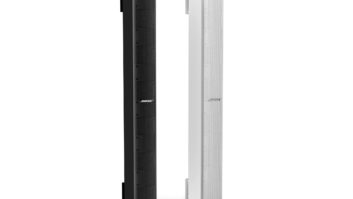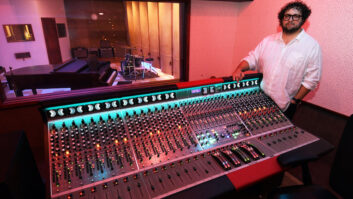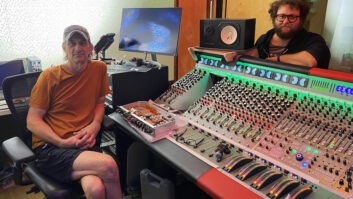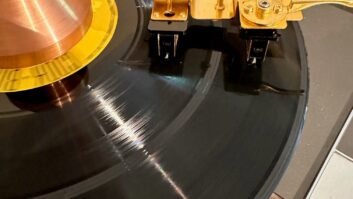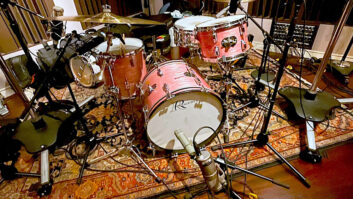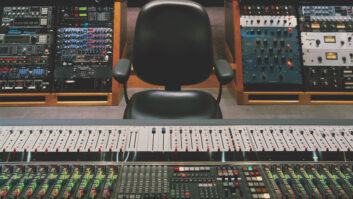Ft. Worth, TX (March 25, 2019)—Niles City Sound may be the studio that helped launch the Grammy-winning career of throwback R&B singer Leon Bridges, but the partners behind the facility initially had a different plan.
“Originally, we were going to do a studio for old town-square radio broadcasts,” says Josh Block, who started Niles City in 2014 with Austin Jenkins, a fellow musician from Austin-based rock band White Denim, and Chris Vivion, the group’s tour manager.
Individual circumstances brought the three to the Dallas-Fort Worth area, where Block and Jenkins are from and where Vivion attended college. Regrouping, they sat down to think about next steps and decided to set up a studio in Fort Worth.
They knew they had found their new home when the building owner threw open the doors to the warehouse, says Block. “From the concrete floor to the ceiling, which is close to 18 feet, it’s just a great space. We thought, before we do the radio thing, let’s do a record. That’s what we knew how to do. And that was Leon.”
The trio bought tie-down straps and converted the huge space into a makeshift studio. “We spider-webbed in and around the space and built temporary packing blanket walls,” he says. They built insulating walls behind the blankets from a pile of HVAC ducting stored at the back of the warehouse. More straps and blankets formed clouds over the drums and the vocal booth.
“We could open the back flap of the vocal booth and let the reverb wrap around and come back into the booth. That was our room slap,” he says.

Niles City has become known for its enviable collection of vintage tube equipment. Much of the classic gear on those initial recordings, which became Bridges’ debut album, Coming Home, was Block’s. “I had been personally acting like an idiot with my wallet for several years before,” he says. That equipment was supplemented with a borrowed Studer tape machine and desk for the initial four-day tracking session, but the equipment didn’t match the sound they were going for, he says.
The partners set out to find the missing pieces of the studio’s sonic jigsaw puzzle. “I’m a lover of gear not just because of the gear but because of the stories that go with it,” says Block. He certainly found some stories.
“I contacted a guy with a couple of Ampex machines—a half-inch 3-track and a 1-inch 8-track. We drove to Northern California and picked them up. He ends up being Dan Healy, who worked with the Grateful Dead. The machines were from their stash; the 3-track was from the Warfield Theater.”
Block had also heard word of a 2-inch 16-track MCI sitting in a barn outside of Sacramento and called in on the way back to Texas. “I brought it home, started working on it and called a couple of guys in Nashville who work on MCIs.” One of them asked Block to read the serial number. “He thinks I may have stumbled on the very first 2-inch 16-track,” he reports.
Niles City Sound originally had a Collins 8-channel dual-mono tube broadcast console, built out by Block’s buddy Jim Vollentine, co-owner of Coil Audio, who had modified it for LCR operation. That console has since been replaced by an Altec 9200, originally built for Bradley’s Barn in Nashville, that was previously owned by Kevin Augunas and installed at Fairfax Recordings (formerly Sound City). “We jumped on that and a couple of the Scully 2-inch machines,” says Block. “Ken Hirsch at Electrodyne Audio in L.A. custom-built the return console. It’s 16-track, 4-bus on the left side, and the right side is a simple LCR return console that works with the 2-inch 16-track.”
Block relies on Altec 604 main monitors, also using Tannoy, PMC, Focal and ATC nearfields. “Because the control room is so small, I tend to shift nearfields around more for the client than myself. When I mix, I go to the ATCs because they’re pretty natural sounding.”
A variety of mics is available, including a Neumann M367, which shares some of the U67’s components. “A microphone I’ve grown to love is the old Altec ‘Coke bottle’ mic. It sounds incredible. We have six and I use them on everything. You have to know how to use it,” he says, “but once you figure it out, it’s really cool.”
As Block wisely notes, “Gear isn’t everything. It’s the knowledge of how it works [that’s important], and I think you have to get into it to learn how it works.”
Microphones are a good example. “There are a lot of things people tend to overlook: how they react to the amp, pairing microphones and amps correctly, what it means to put a mic up in a room and what that polar pattern does,” he says. “It’s not just about using a figure-8 to null out bleed in a room. It’s about making sure the sounds around you that happen to bleed into that microphone come in at a good phase relationship and sound good.”
A solid understanding of microphones is critical at Niles City, which today is one large tracking space with an elevated control room, created with the assistance of Suffolk Studio Design’s Bob Suffolk. Originally from England, Suffolk moved to Texas in the ’90s after decades of rubbing elbows with a who’s who of ’60s and ’70s UK rock royalty; over the years, he’s worked on roughly 200 studios, including a refurb of Trident Studios in London.
“He has an affinity for that era and those studios. Bob really, really pushed to put a tiny version of the Abbey Road staircase in,” says Block. “The idea was to put the emphasis on the tracking room, with no booths or isolation, and was based around the most basic way to improve sightlines, which was to take away distractions,” he elaborates. “The best way to do that was to lift the control room up.”
Niles City Sound is more like a brand than a studio, says Block, with the whole team working as session players, songwriters, engineers and producers.The Leon Bridges project was a boon; determined not to be defined by it, however, they have since worked with more contemporary-sounding artists such as Frank Turner, Need to Breathe, Robert Ellis and the Tender Things, led by Jesse Ebaugh of the Heartless Bastards. Their artist development roster includes Vincent Neil Emerson, Jake Paleschic and Keeva.
A common thread is a focus on the vocal. “I’m interested in those voices,” says Block. “And it’s good to work with artists who have an audience in mind because there’s something that brings everybody together.”
Niles City Sound www.nilescitysound.com
